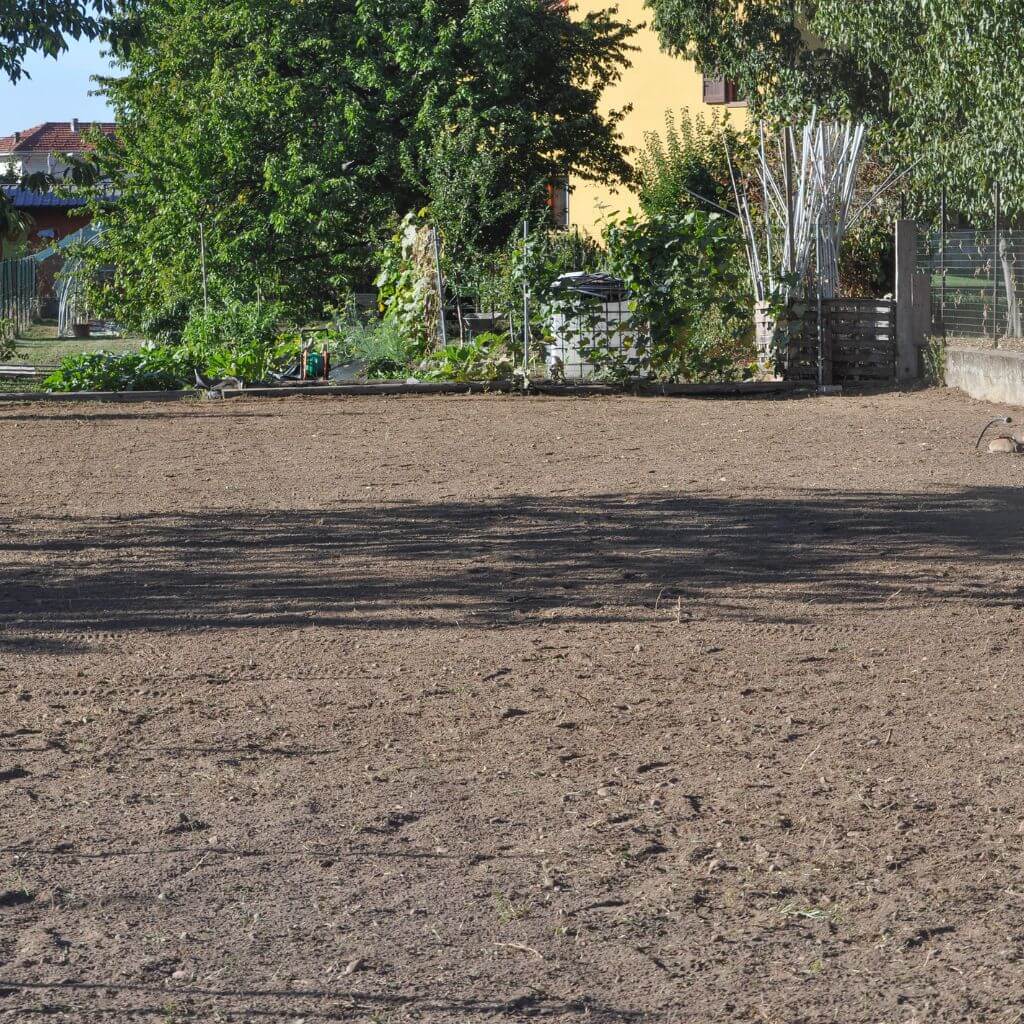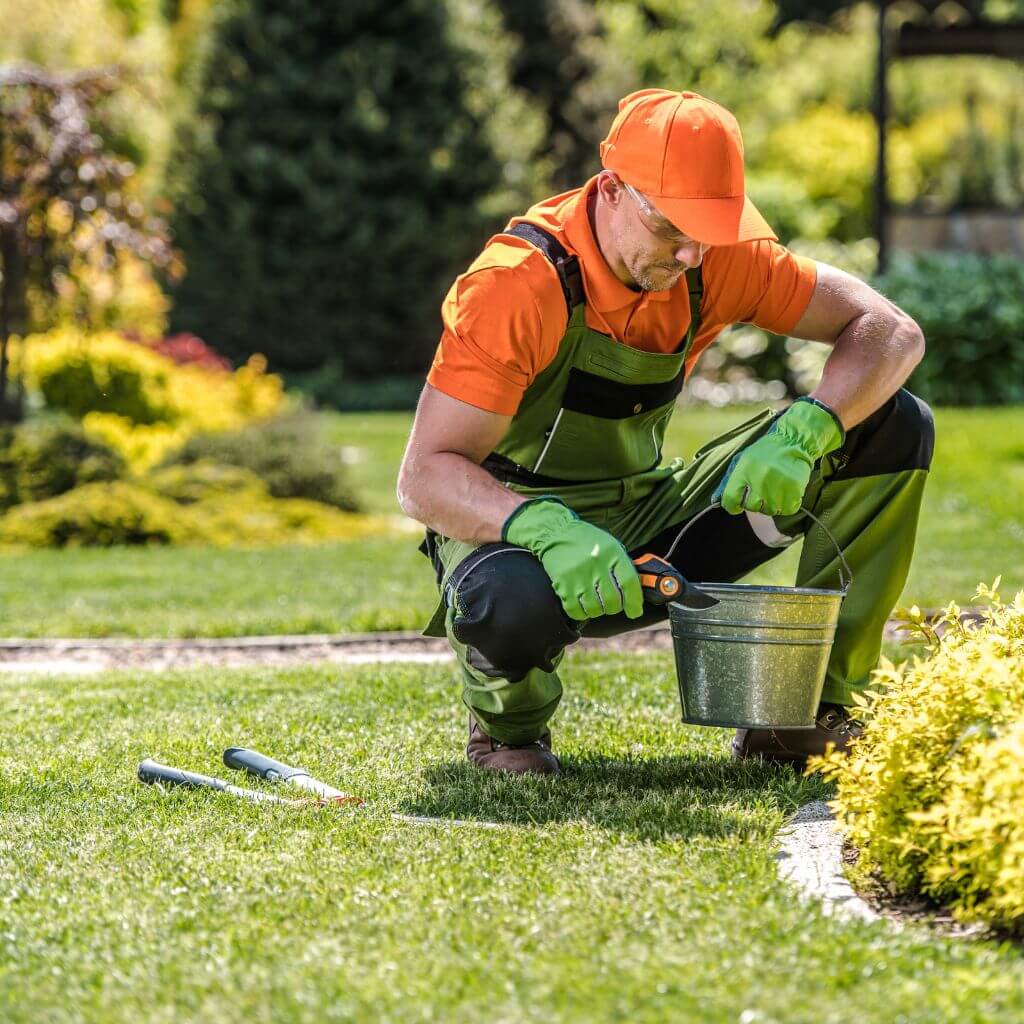
You’re looking to achieve the perfect green lawn that you’ve always dreamed of, but where do you start? Well, look no further because we have the solution for you: top soil for grass. This essential element can make all the difference when it comes to creating a lush and healthy lawn. Whether you’re starting from scratch or looking to revitalize your existing grass, top soil is the key ingredient that will ensure your grass thrives. In this article, we will explore the benefits of using top soil, how to choose the right type, and provide helpful tips on how to properly apply it for optimal results. Get ready to transform your lawn into a haven of verdant beauty with top soil for grass!
What is topsoil?
Topsoil is the uppermost layer of soil that covers the Earth’s surface. It is rich in organic matter and nutrients, making it an essential component for healthy plant growth. This layer is usually composed of a mixture of mineral particles, organic material, water, and air. Topsoil is essential for grass growth, as it provides a favorable environment for plant roots to anchor themselves and absorb necessary nutrients.
Definition | Top Soil for Grass
Topsoil can be defined as the outermost layer of soil, typically about the top 5 to 10 inches, that is rich in organic matter and contains a balanced blend of minerals and nutrients required for plant growth. It is the layer where most of the biological activity, such as decomposition of organic matter and nutrient cycling, takes place. This layer is usually darker in color compared to lower soil layers due to the presence of decomposed plant material.
Characteristics
The characteristics of topsoil can vary based on factors such as location, climate, and management practices. However, some common characteristics of good topsoil include its ability to retain moisture while allowing for proper drainage, being well-aerated to facilitate root respiration, and having a balanced pH level. Additionally, topsoil should have a good structure, with particles that are neither too sandy nor too clayey, allowing for optimal root development.
Importance for grass growth
Topsoil plays a vital role in grass growth as it acts as a reservoir of nutrients, water, and air that are essential for the development of healthy and lush lawns. The organic matter present in topsoil holds moisture, preventing the grass from drying out, while also providing a source of nutrients for the plants. Furthermore, the root systems of grass rely on topsoil for anchorage and to access the required oxygen for respiration. Therefore, ensuring the presence of good quality topsoil is crucial for the overall health and vigor of your grass.

Types of topsoil
Topsoil can be classified into various types based on its composition and texture. The most common types of topsoil include sandy topsoil, clay topsoil, and loamy topsoil.
Sandy topsoil
Sandy topsoil is characterized by its large particle size and gritty texture. It drains quickly and does not retain water well, making it suitable for areas with heavy rainfall or if excessive water retention is a concern. However, sandy topsoil tends to be less fertile and may require the addition of organic matter and nutrients to support optimal grass growth.
Clay topsoil
Clay topsoil, on the other hand, has fine particles and a smooth texture. It has excellent water retention capabilities but can become compacted, restricting root growth and drainage. It has high fertility due to its ability to hold nutrients, but it can be challenging to work with. Clay topsoil benefits from additives such as sand or organic matter to improve its drainage and structure.
Loamy topsoil
Loamy topsoil is considered the ideal type of topsoil for grass growth. It is a balanced mixture of sand, silt, and clay, providing good drainage while retaining adequate moisture and nutrients. Loamy topsoil has a crumbly texture, allowing for optimal root penetration and growth. It is highly fertile, making it suitable for a wide range of grass species. If possible, incorporating loamy topsoil into your lawn will help establish a healthy and vibrant grass cover.
Testing topsoil quality
Before preparing your topsoil for grass, it is essential to test its quality to determine any deficiencies or imbalances that may affect grass growth. Conducting a topsoil test provides valuable information about the soil’s pH level, nutrient content, and other important factors.
Why test topsoil?
Testing topsoil is crucial because it helps identify any nutrient deficiencies that may hinder grass growth. By understanding the specific characteristics of your topsoil, you can amend it appropriately to provide ideal growing conditions for your grass. Testing also allows you to determine if the soil’s pH level is within the optimal range for grass growth. Additionally, analyzing the topsoil helps prevent over- or under-applying fertilizers, saving you time, money, and minimizing negative environmental impacts.
Methods for testing topsoil
Several methods can be used to test the quality of topsoil. The most common method is sending a soil sample to a professional soil testing laboratory. These labs analyze the sample to determine its nutrient composition, pH level, and organic matter content. Another option is using soil testing kits, which allow you to conduct basic tests yourself. With these kits, you can test the pH level, nutrient levels, and organic matter present in the soil. Whichever method you choose, ensure you follow the instructions provided carefully to obtain accurate results.
Interpreting test results
Interpreting the results of your topsoil test is crucial for understanding the necessary amendments or adjustments needed to optimize grass growth. Nutrient levels can be classified as low, medium, or high, and you can adjust fertilizer usage accordingly. The pH level of the soil indicates its acidity or alkalinity, with grass typically preferring a slightly acidic pH range of 6.0 to 7.0. If the pH level is too acidic or alkaline, you can apply soil amendments, such as lime or sulfur, to adjust it to the optimal range. Understanding and acting upon the test results will help you provide the necessary elements for a healthy lawn.
Preparing topsoil for grass
Properly preparing your topsoil is essential to create a suitable environment for grass growth. This involves clearing and leveling the area, removing debris and weeds, and amending the soil as necessary.
Clearing and leveling the area
Before beginning any soil preparation, it is important to remove any existing vegetation, rocks, or debris from the area. This provides a clean and even surface for turf establishment. Leveling the area is also crucial to avoid water pooling or uneven grass growth. Use a rake or shovel to smooth out any bumps or depressions and create a flat surface.

Removing debris and weeds
Clearing the area not only involves removing large debris but also addressing problematic weeds. Weeds compete with grass for water, nutrients, and sunlight, inhibiting its growth. Pull out any visible weeds from the area, ensuring the roots are completely removed to prevent their regrowth. Applying a weed killer before prepping the topsoil may also help eliminate any persistent weeds.
Amending the soil
Once the area is cleared and leveled, it’s time to amend the soil if necessary. Referencing the results of your topsoil test, you can adjust the pH level or add organic matter and nutrients to provide a favorable environment for grass growth. For example, if the soil lacks organic matter, incorporate compost or well-rotted manure into the topsoil. If the nutrient levels are low, apply an appropriate fertilizer based on the test results. Mixing these amendments thoroughly will ensure their uniform distribution throughout the topsoil and help promote healthy grass growth.
Applying topsoil to grass
After preparing the topsoil, the next step is to apply it to the grass area. This involves calculating the amount needed, spreading the topsoil evenly, and properly watering and compacting the soil.
Calculating the amount needed
To determine the amount of topsoil required for your lawn, measure the area’s length and width in feet. Multiply these two measurements to obtain the square footage of the area. Next, determine the desired thickness of the topsoil layer, typically around 4 to 6 inches. Convert this thickness to feet and multiply it by the square footage. This calculation will provide an estimate of the total cubic feet of topsoil needed. Consider purchasing a bit more than the calculated amount to account for any uneven surfaces or settling of the soil.
Spreading topsoil evenly
Once you have the required amount of topsoil, spread it evenly over the grass area using a rake or shovel. Start at one end of the area and work your way to the other, ensuring a consistent layer of topsoil. Aim for a thickness of approximately 4 to 6 inches but avoid excessive layering, as it can suffocate the grass roots. Smooth out the topsoil surface to create an even and level landscape for the grass to establish itself.
Watering and compacting
After applying the topsoil, it is crucial to water it thoroughly to promote settling and help establish good seed-to-soil contact. Use a gentle spray or sprinkler to water the area, taking care not to wash away the topsoil or create water puddles. Properly moistening the topsoil will facilitate seed germination and ensure optimal grass growth. Once the soil is sufficiently moist, it can be lightly compacted using a roller or by gently walking over it to eliminate any air gaps and provide a stable base for grass establishment.
Maintaining topsoil quality
Maintaining the quality of topsoil is vital for the long-term health and sustainability of your grass. Implementing practices that prevent erosion, promote proper aeration, and add organic matter are essential for preserving soil fertility.
Preventing erosion
Erosion can be a significant threat to topsoil quality, as it can wash away valuable nutrients and leave behind compacted or infertile soil. To prevent erosion, consider installing erosion control measures such as retaining walls, terracing, or planting erosion-resistant grasses along slopes. Additionally, minimize water runoff by ensuring proper drainage in your lawn and avoiding overwatering or heavy irrigation practices.
Aerating the soil
Regularly aerating the soil is essential to prevent compaction and enhance root development. Soil compaction can occur due to foot traffic, heavy machinery, or natural settling. Aeration involves perforating the soil with small holes to allow for better air and water circulation. This process can be done manually using a garden fork or with a mechanical aerator. By aerating the soil, you promote the breakdown of organic matter, reduce compaction, and enhance nutrient availability for the grass roots.
Adding organic matter
Continuously adding organic matter to your lawn is an effective way to improve soil structure and fertility. Organic matter, such as compost, well-rotted manure, or grass clippings, helps retain moisture, enhances nutrient availability, and improves soil aeration. Apply a thin layer of organic matter on the grass area annually or as needed, ideally in the fall or early spring. This practice will slowly decompose the organic matter, enriching the topsoil and supporting healthy grass growth.
Choosing the right topsoil
Selecting the right topsoil for your lawn is crucial to provide optimal growing conditions for your grass. Consider factors such as grass type, pH levels, and seek expert advice when making your selection.
Choosing based on grass type
Different grass species have varying preferences regarding soil types and pH levels. Research the specific requirements of your grass species and select a topsoil that aligns with those needs. For example, some grasses prefer sandy or well-draining soils, while others thrive in loamy or clayey soils. Choosing a topsoil that matches your grass type will ensure better root development and overall success.
Considering pH levels
pH levels play a significant role in nutrient availability and grass growth. Various grass species have different pH preferences, with most grasses preferring slightly acidic soil with a pH range of 6.0 to 7.0. Before selecting topsoil, test the existing soil’s pH level and choose a topsoil that will maintain or adjust the pH level to meet your grass’s requirements. While the pH level can be modified, selecting a topsoil with the appropriate pH range can save time and effort in the long run.
Consulting experts or professionals
Seeking expert advice when choosing topsoil can be beneficial, especially if you are unsure about the specific needs of your grass or the soil conditions in your area. Consult with landscaping professionals, garden centers, or agricultural extension services for guidance on selecting the most suitable topsoil for your lawn. These experts can provide valuable insights based on local conditions, grass types, and specific requirements, ensuring you make an informed decision and set your lawn up for success.

Common mistakes to avoid
In the process of dealing with topsoil, it is essential to avoid common mistakes that may hinder grass growth and overall lawn health.
Using poor quality topsoil
Using poor quality topsoil can severely impact grass growth and result in an unhealthy lawn. Topsoil that lacks essential nutrients, organic matter, or has an imbalanced composition can contribute to weak or sparse grass. It is crucial to invest in high-quality topsoil, even if it means paying a bit more initially. Choosing a reputable supplier known for providing topsoil with favorable characteristics will help ensure your grass has the best foundation to thrive.
Over-applying topsoil
While it is important to apply an adequate layer of topsoil for grass establishment, over-application can have negative consequences. Excessive topsoil can create drainage problems and prevent proper root development. Moreover, it can suffocate the grass, leading to stunted growth or even death. Always follow the recommended thickness guidelines and avoid excessive layering to maintain a healthy balance between soil, water, and air.
Neglecting soil test results
Neglecting to conduct a soil test or ignoring its results is a common mistake that can hinder the health and growth of your grass. Soil test results provide valuable information about the specific needs of your topsoil, allowing you to address any nutrient deficiencies or imbalances. Failing to amend the soil as recommended can lead to poor grass growth, nutrient deficiencies, and continued struggles in maintaining a healthy lawn. Regular soil testing and following the recommendations will help you establish an optimal environment for your grass.
Benefits of using topsoil for grass
Using topsoil for grass provides a range of benefits that contribute to healthy and robust lawns. These benefits include improved drainage, promoted root growth, and enhanced nutrient availability.
Improved drainage
Topsoil with suitable composition and structure promotes proper drainage for your lawn. Well-drained soil prevents waterlogged conditions that can lead to root rot or fungal diseases. It allows excess water to move away from the root zone, enabling the grass to access oxygen and nutrients more effectively. Good drainage also prevents erosion and helps maintain the stability and integrity of your lawn.
Promoted root growth
Healthy root growth is essential for grass to establish a strong and resilient lawn. Topsoil provides the necessary medium for root development, allowing the grass to anchor itself firmly and absorb nutrients from the surrounding soil. The organic matter and balanced nutrient composition in topsoil help promote strong root systems, enabling the grass to withstand environmental stressors such as drought or foot traffic.
Enhanced nutrient availability
Topsoil contains organic matter and essential nutrients necessary for grass growth. The organic matter enriches the soil by providing a constant supply of nutrients as it decomposes. This process enhances soil fertility and nutrient availability for the grass roots. Additionally, the mineral composition of topsoil ensures a balanced supply of macronutrients and micronutrients that are vital for healthy grass growth. By using topsoil, you provide a nutrient-rich environment that supports optimal grass health and vitality.
Conclusion
Topsoil is a vital component for successful grass growth, providing a suitable environment to support healthy and vibrant lawns. Understanding the different types of topsoil, testing its quality, properly preparing and applying it, and implementing practices to maintain its quality are all crucial steps in achieving an enviable grass cover. By choosing the right topsoil, addressing potential deficiencies, and following sound lawn care practices, you can create a lush and thriving lawn that will be the envy of the neighborhood. Remember, starting with a solid foundation of topsoil is the first step towards establishing healthy and beautiful grass.






